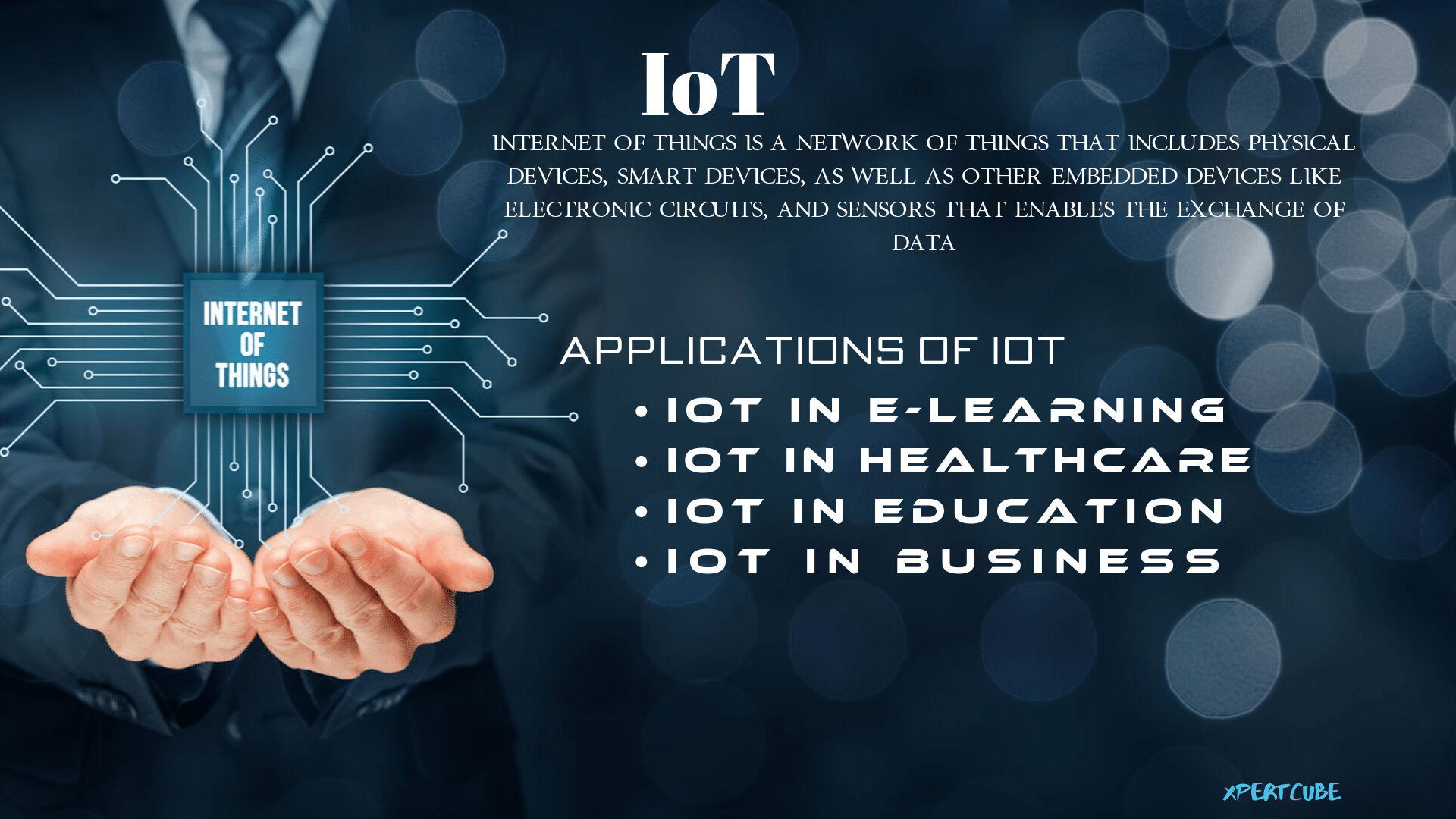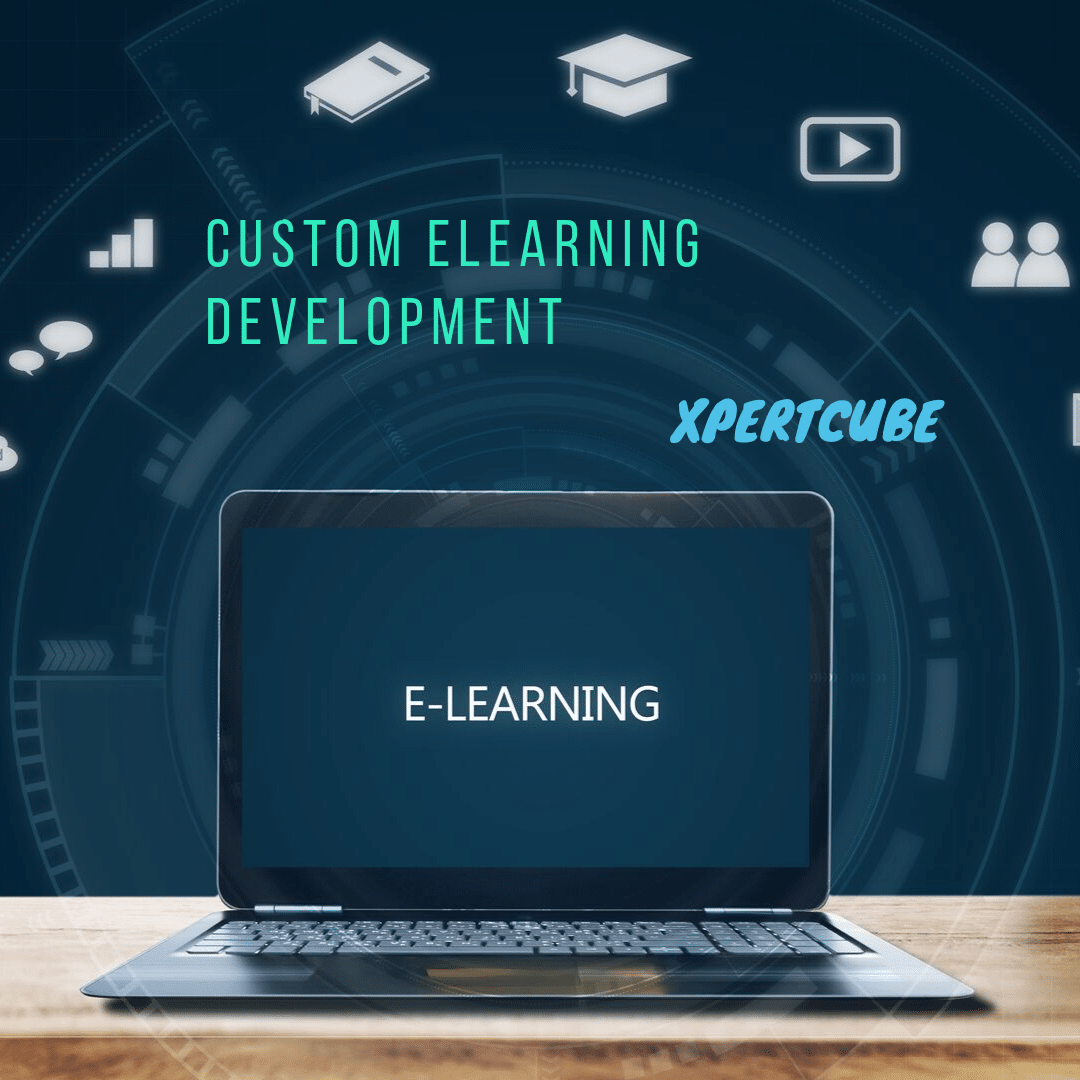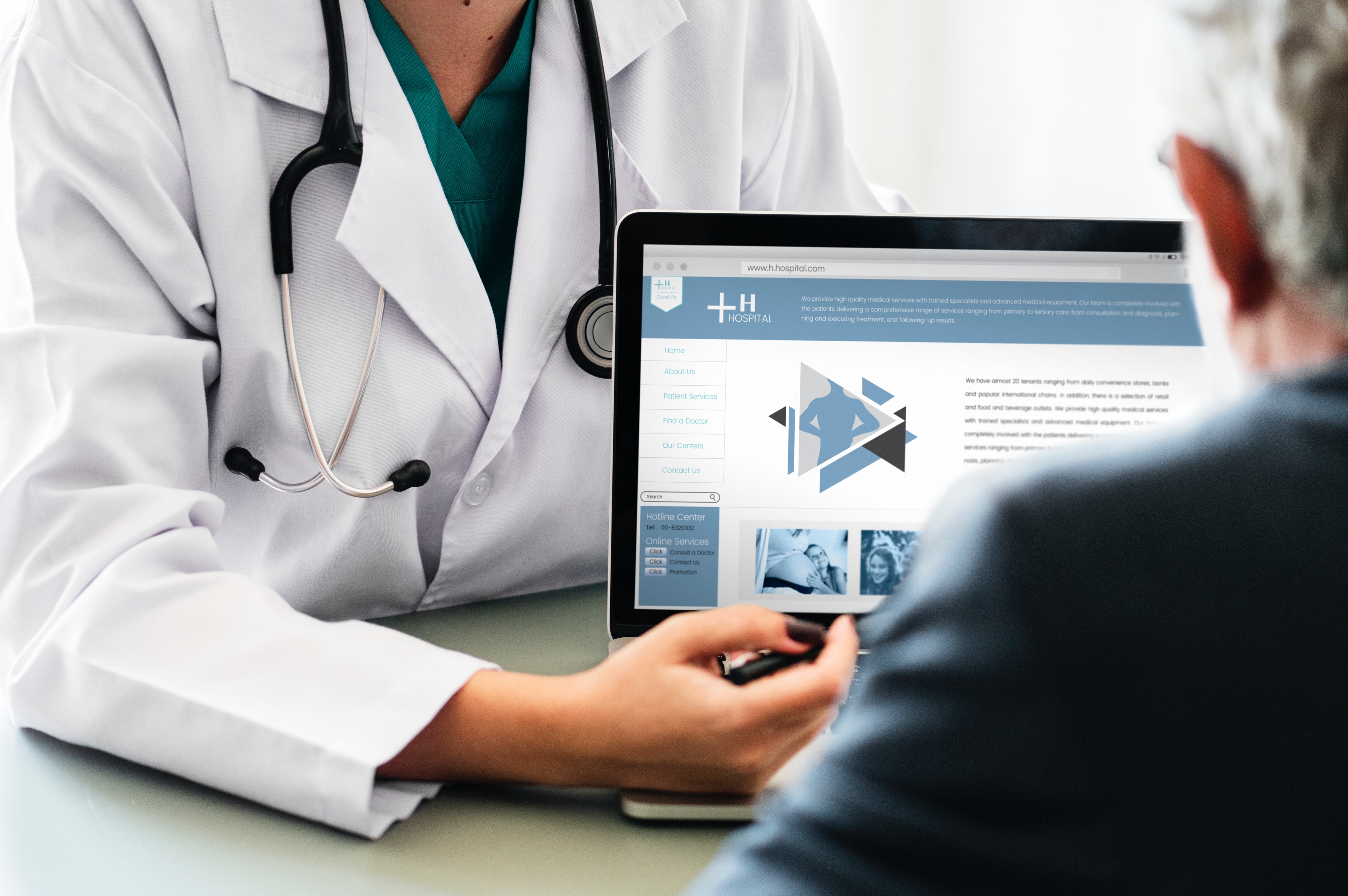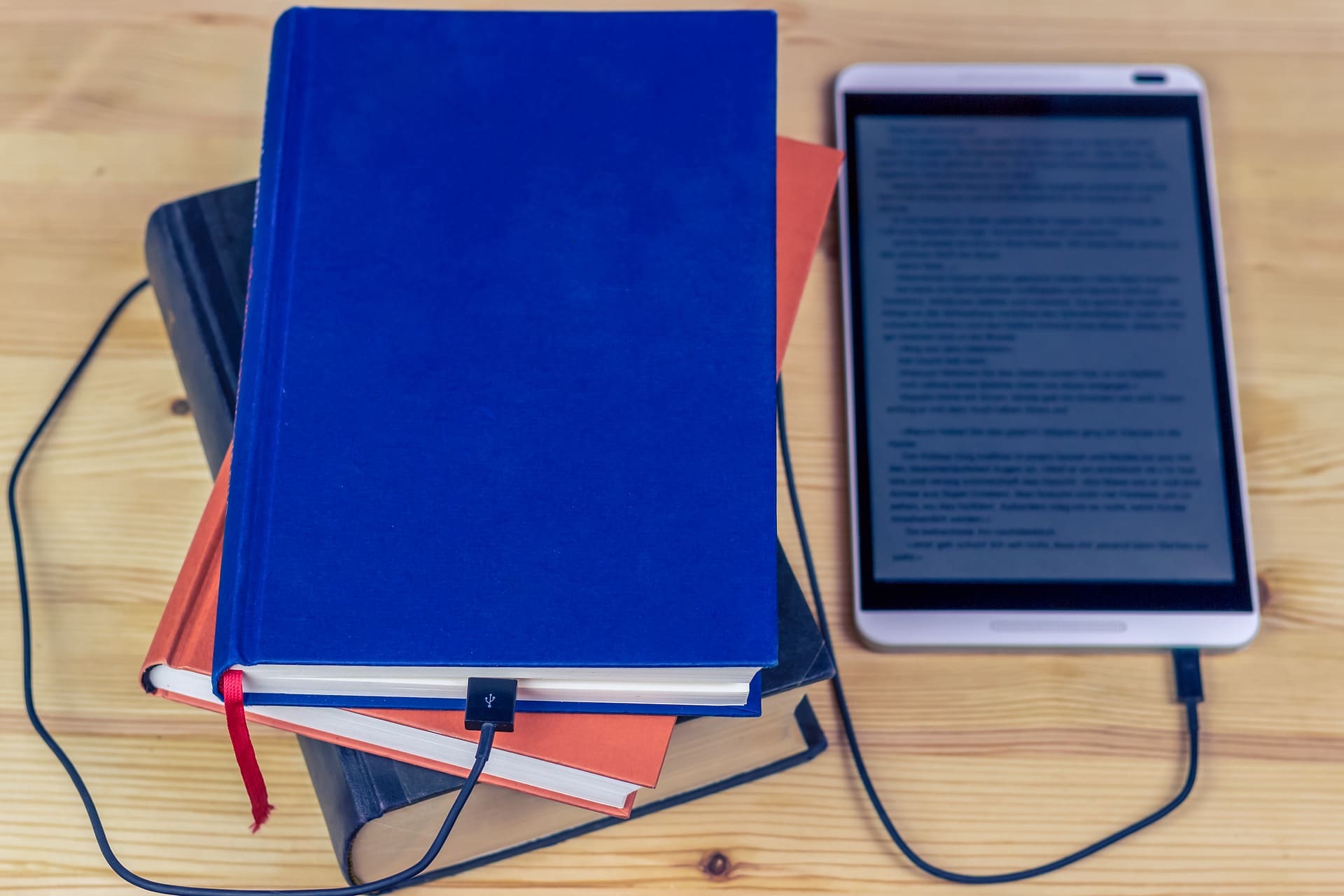IoT/ Internet of Things and Application pf IoT
 IoT or the Internet of Things is a network of things that includes physical devices, smart devices, as well as other embedded devices like electronic circuits, and sensors that enables the exchange of data. According to Wikipedia “The Internet of Things (IoT) is a system of interrelated computing devices, mechanical and digital machines, objects, animals or people that are provided with unique identifiers (UIDs) and the ability to transfer data over a network without requiring human-to-human or human-to-computer interaction”.In short, we can define IoT as any physical entities which have some sensors or electronic module to get connected through the internet or network. By the help of IoT, we are cable to connect real-world things to the internet. With the help of Microcontrollers and sensors, we are able to connect each and every real-world object to the internet. These microcontrollers or microprocessors are connected in a manner to the real-world object. These sensors would transmit data on behalf of the objects.
IoT or the Internet of Things is a network of things that includes physical devices, smart devices, as well as other embedded devices like electronic circuits, and sensors that enables the exchange of data. According to Wikipedia “The Internet of Things (IoT) is a system of interrelated computing devices, mechanical and digital machines, objects, animals or people that are provided with unique identifiers (UIDs) and the ability to transfer data over a network without requiring human-to-human or human-to-computer interaction”.In short, we can define IoT as any physical entities which have some sensors or electronic module to get connected through the internet or network. By the help of IoT, we are cable to connect real-world things to the internet. With the help of Microcontrollers and sensors, we are able to connect each and every real-world object to the internet. These microcontrollers or microprocessors are connected in a manner to the real-world object. These sensors would transmit data on behalf of the objects.
IoT gives us a possibility to connect the real-world objects to the internet and access real-world objects from anywhere through the internet. For example, you can control your home electronics from anywhere in the world. Devices other than standard products, such as smartphones and computers, when connected to the internet comprise the internet of things(IoT).
IoT IN e-LEARNING
 The IoT, when joined with other technologies, it can offer a wide variety of eLearning solutions. By the introduction of IoT in eLearning, it would change the future of online learning. Elearning is the globalization of education through which anyone from anywhere can learn in a virtual classroom. Learners are able to get degrees with the help of eLearning by sitting in their home. By the introduction of IoT, it changed the whole industry of eLearning. It improved educators, professionals, entrepreneurs in a way that it helped in reshaping the educational industry. It is estimated that IoT connected devices will exceed the number of mobile devices in the future. A recent survey on IoT devices says that by the end of 2020, there will be around 6 billion smartphones and 50 billion IoT enabled devices worldwide.
The IoT, when joined with other technologies, it can offer a wide variety of eLearning solutions. By the introduction of IoT in eLearning, it would change the future of online learning. Elearning is the globalization of education through which anyone from anywhere can learn in a virtual classroom. Learners are able to get degrees with the help of eLearning by sitting in their home. By the introduction of IoT, it changed the whole industry of eLearning. It improved educators, professionals, entrepreneurs in a way that it helped in reshaping the educational industry. It is estimated that IoT connected devices will exceed the number of mobile devices in the future. A recent survey on IoT devices says that by the end of 2020, there will be around 6 billion smartphones and 50 billion IoT enabled devices worldwide.
IoT is going to mark its influence on every industry. Morethan usual written contents, videos are becoming the new method of easy learning as it adds an interactive feature, and this increases around 40% engagement than usual contents. Educators and learners can change the way they deliver content, as video formatted contents. The video contents can be combined very easily into small IoT enabled devices. It is important to stay up with the latest and current IoT facts and trends. eLearning development specialists build unique solutions that encourage positive user experiences for developed educational systems to reach the goals of higher education establishments, universities, high schools, primary schools, businesses, and corporations.
Benefits
- Accessibility
Possibility of teaching and learning at any time, anywhere.
- Real-time interaction
Learners can interact with the educators by doing all assigned works, online assignments and getting results in real-time mode.
- Better performance
They can use IoT technologies such as RFID, WSN, and cloud system to collect data related to learner efficiency. Likewise, educators can use in order to enhance the performance of all educational objects.
IoT IN HEALTHCARE
 The applications of IoT in the medical field has started with the introduction of RFIDs. By helping in manufacturing, administration, and tracking of both medical devices and medicines, RFID can help in reducing public health difficulties. This increases the quality of treatment and reducing costs. IoT is much more beneficial in the medical field when they are applied in sectors like medical waste tracking management, On-time monitoring of patients, patient information management, medical emergency management and from duplicating medical devices and medicines.
The applications of IoT in the medical field has started with the introduction of RFIDs. By helping in manufacturing, administration, and tracking of both medical devices and medicines, RFID can help in reducing public health difficulties. This increases the quality of treatment and reducing costs. IoT is much more beneficial in the medical field when they are applied in sectors like medical waste tracking management, On-time monitoring of patients, patient information management, medical emergency management and from duplicating medical devices and medicines.
Benefits
-
Simultaneous reporting and monitoring
IoT allows real-time monitoring of patients in conditions like heart failure, asthma attacks, etc via connected devices. Readmission rate of patients reduced to 50% because of real-time patient monitoring on heart failure patients, says a survey report conducted by the centre of connected health policy. The IoT devices gather and stores patients data including blood pressure, oxygen levels, blood sugar levels, ECGs, etc. All these gathered data are stored in the cloud. These data can be accessed by an authorized person(could be a physician, insurance company, health firm, or a consultant) regardless of their place, time, or device.
-
End to end connectivity and affordability
With the use of some new technologies and recently found healthcare facilities, IoT can automate patient care and progress. IoT in the medical industry allows interoperability, machine to machine communication, exchange of information, and data movement that makes the healthcare industry productive. These technology constrained framework helps in minimizing the expense, by avoiding unnecessary visits, using better quality resources, and improving planning.
The main Connectivity protocols are Bluetooth LE, Wi-Fi, Z-wave, ZigBee, and other modern protocols. Medical employees can change the method of diagnosing illness and some disease in patients can also establish new ways of treatment.
- Data assortment and analysis
IoT devices can basically gather, analyze and report the data in real-time and can remove unnecessary data and this would help health care organizations, consultants, insurance companies get important analytics and data-driven insights, which will speed up decision making and make less vulnerable to errors.
-
Tracking and alerts
On-time alerts on patient’s current condition are crucial in life-threatening critical situations. Medical IoT devices collect patient’s current data and share that data to doctors for real-time tracking while providing notifications to people about critical situations via smartphone applications and other connected services. Reports and alerts give a solid opinion about patient’s condition, irrespective of place and time and this helps to make adept decisions and provide on-time treatment.
-
Remote medical assistance
Many mobile applications are developed for patients in order to contact a doctor who is many distances away, in situations of emergency. Doctors can instantly check the patient through the application, identify the illness and recommend treatments on the go. Also, many healthcare industries are planning to develop machines that can distribute drugs based on a patient’s prescription and further treatment details available via connected devices.
-
Research
IoT for healthcare can also be used for research purposes because IoT enables us to collect a massive amount of data about the patient’s illness, which would have taken many years if we collected it manually. This data thus obtained can be used for the statistical study that would support the medical research. This data also can be used for statistical studies and for medical research. IoT doesn’t only save time but also money which would go for research. Introduction of bigger and better medical treatments enabled in the medical industry since the use of IoT in medical research.
Challenges
-
Patient’s privacy
Systems which stores data may get hacked due to potentially weaken privacy. Attention will need to be focused on data security and it demands additional charges. Also, illegal access to centralization is one of the security issues, and there may be a possibility that illegal invaders may access centralized systems and some harmful purposes.
-
Global healthcare regulation
Many guidelines are emanating by international health agencies which must be surely followed by legal medical institutions including the IoT in their framework. These may limit possible illegal issues to some extent.
-
Complexity
The drafting, progressing, and managing and allowing of the large technology to IoT system is entirely difficult.
IoT IN EDUCATION
 The education sector is not far from the great evolution of converting the virtual and physical world into IoT which makes the learning process collaborative, secure, and agile. The future of IoT in the education sector looks solid and steady regarding the predictions of its growth in the technological world. IoT has made the storage, collection, sharing, presentation, of all data easily. Moreover, the cloud provides storage of data related to student’s scores, home works and class works, projects, and assignments.
The education sector is not far from the great evolution of converting the virtual and physical world into IoT which makes the learning process collaborative, secure, and agile. The future of IoT in the education sector looks solid and steady regarding the predictions of its growth in the technological world. IoT has made the storage, collection, sharing, presentation, of all data easily. Moreover, the cloud provides storage of data related to student’s scores, home works and class works, projects, and assignments.
Entire learning flow, starting from content creation to content publication of large content modules is created by IoT in the education and IoT made education more interactive and fun way of learning. Lecture capture solution is another interactive platform used to record lectures, presentations, etc in video format for later viewing. School buses,3D printers, attendance tracking, VR headset, interactive whiteboards, are the main tools which can be considered as the IoT devices in education.
Benefits
-
Connecting learners Worldwide
The latest devices related IoT in the sector of education are interactive boards and digital highlighters and they can hasten and simplify the learning experience by receiving, acknowledging and reciprocating information. Likewise, digital scanners help the learning experience by digitally transferring text to a smartphone. Hence, by utilizing these devices, students assembling in their classroom can communicate with teachers, trainers, and peers across the world.
- Smart textbooks
Nowadays, many textbooks have QR codes and hence, students can scan these codes using their smartphones to access additional knowledge resources, in addition to assignments and feedback.
- Care for special needs students
Various connected devices are available now in the market in order to help students with special needs. For example, a visually weakened learner after using such an IoT device can able to understand the text on his computer easily without asking for another person’s guidance. This can support this/her self-confidence to yield better productivity.
-
Student engagement
Digitalized learning materials and smart technologies aid in developing student engagement rate over conventional education systems.
- Connect academies
A student sitting in a classroom can communicate with teachers around the globe, educators can give learners a real-time knowledge of the subject through sensors and live feeds monitoring.
Challenges
-
Security and privacy
Data collection is an important part of this IoT collaboration. A huge number of educational traits are being collected here, including student’s learning history, location, and a number of personal details. The key issues that need careful attention are security privacy concerns about IoT.
-
Implementation cost
The expense of implementation is also a big downside of IoT in education. These costs include the cost to acquire hardware, software licenses and permits, and maintenance charge.
-
Lack of interoperability
Interactive whiteboards, attendance tracking, temperature sensors are some of the examples of IoT technologies executed in the education sector. Most of these technologies are not interoperable with some other smart technologies and this difficulty may harm the growth of digitized education.
IoT IN BUSINESS
 IoT or internet of things is known as a network of devices, appliances, software, sensors, electronics, etc which primarily used to connect and exchange data. Implementing IoT in business offers endless possibilities and with that, this technology can permanently change the way that business operates. Introduction of IoT in business resolves the difficulties related to storage and warehousing by connecting IoT software and devices in your storage units and warehouses which can support in handling inventory changes while your employees can spend their time in extra demanding responsibilities.
IoT or internet of things is known as a network of devices, appliances, software, sensors, electronics, etc which primarily used to connect and exchange data. Implementing IoT in business offers endless possibilities and with that, this technology can permanently change the way that business operates. Introduction of IoT in business resolves the difficulties related to storage and warehousing by connecting IoT software and devices in your storage units and warehouses which can support in handling inventory changes while your employees can spend their time in extra demanding responsibilities.
Apart from granting access to data, IoT in the business permits to track and record patterns of the interaction of users with the device. The businessman has to be familiar with the latest IoT trends and aware of when, where their clients are spending time online. For achieving these goals, they require constant updates on current trends and it can help them in surviving in the digital platform. IoT in business enables entrepreneurs and clients came across with each other and helps business in evaluating data for development and growth. In short, all data can be gathered, shared and interpreted very easily using the internet of things or IoT.
Benefits
- Provides workplace safety
IoT enabled devices can ensure and enhance overall workplace safety especially in high-risk environments like mining industries, construction, etc using sensors and wearables. The work, workers, and working of equipment can be monitored continuously and warned against fails and depletion and ensuring the safety of workers by using devices like connected video surveillance cameras and smart locks.
- Improve customer service and experience
The IoT technologies like mobile card readers which help in processing transactions and smart trackers which helps customers to keep track of their shipped products improves the customer experience.
-
Improve productivity and efficiency
The main strategies for ensuring profitability in business is by maximizing productivity and efficiency. IoT devices help in evaluating demand and efficiency accurately and direct various stages of manufacturing through real-time tracking. Also, Employees are cautioned about technical failures in real-time.
- Reduced cost
IoT solutions help in reducing cost and improving profitability. IoT devices help in monitoring equipment and misalignments in the manufacturing industry which in turn helps from a large loss of money. Some IoT devices also help in saving electrical energy and save energy cost.





Excellent article. Great images.